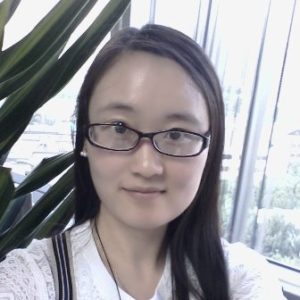The Chief Economist of CNNC, Mr. Huang Mingang, received a delegation from the Shanghai Advanced Research Institute, Chinese Academy of Sciences (SARI)*. Mr. Jiang Biao, vice president of SARI, led the delegation.
Both sides exchanged opinions of the cooperation on the research and development of the extraction of uranium from seawater.
During the meeting, both sides agree to complement each other with their respective technical and R&D advantages in the cooperation.
In the latest years, SARI completed several achievements in the materials R&D of the seawater uranium-extraction technology. While CNNC-Beijing Engineering Chemistry & Metallurgy Institute (BRICEM)**, and the China Institute of Atomic Energy (CIAE)*** have extensive experience in the uranium metallurgy field.
Both Institutes have lots of researches on the materials and process regarding the seawater uranium-extraction.
*Shanghai Advanced Research Institute, Chinese Academy of Sciences (SARI): was jointly established by the Chinese Academy of Sciences (CAS) and the Shanghai Municipal Government. SARI conducts innovative research in a broad range of scientific fields and aims to foster collaboration between academia and industry.
SARI focuses on five research areas: frontier studies and advanced manufacturing; information technology; space technology; energy and environment; and health sciences. SARI is currently working on three major projects: Advanced Microsatellite Initiative, Urban Intelligent Energy Network Demonstration, and Advanced Medical Equipment Program.
** Beijing Research Institute of Chemical Engineering and Metallurgy (BRICEM), CNNC was founded in 1958 and belongs to China National Nuclear Corporation. It’s an integrated high-tech institute which mainly engaged in the uranium extraction and hydrometallurgy technology and combined technical teaching, products developments with production managements. The institute locates on the south of Tongzhou District, Beijing. The production base locates Yongle dian development zone with occupied area one hundred thousand m2. 750 research institute in Liaoning Province also belongs to Beijing Research Institute of Chemical Engineering and Metallurgy. There are 500 employees, including more than 200 senior engineers, 4 state-level experts and 12 ministerial and province-level experts.
The institute is the only integrated research institute which at the front of nuclear fuel cycle and engaged in natural uranium chemistry and chemical engineering research. The research fields includes uranium mine(including In-Situ Blast-Leaching and normal mine), hydrometallurgy of uranium mine(including in-situ and heap leaching), uranium purification, uranium transformation, material research, equipments developments and production, mines processing engineering, chemical technics, radioactive protection, projects designs, on-line monitor and auto-control etc. and engages in corresponding education.
*** China Institute of Atomic Energy (CIAE), originating from The Institute of Modern Physics of Chinese Academy of Sciences, was founded in 1950. CIAE is the cradle of nuclear science and technology in China, and also a comprehensive R&D base which is in a leading, fundamental and forward-looking position in nuclear field. It now has a total staff of 3000, including 5 academicians of the Chinese Academy of Sciences and Chinese Academy of Engineering.
The current president of CIAE is senior research fellow Wan Gang.
CIAE is composed of six departments: Department of Nuclear Physics, Department of Reactor Engineering, Department of Radiochemistry, Department of Isotope, Department of Nuclear Technology Application, and Department of Radiation Safety; 2 technical divisions: Division of Scientific and Technological Information, Division of Radiation Metrology; 6 centers or key laboratories of national or ministerial level: China Nuclear Data Center, Research Center for National Isotope Engineering Technology, National R&D Center for Fast Reactor Engineering, National Nuclear Physics Laboratory of Beijing Tandem Accelerator, Key Laboratory of Nuclear Safeguard Technology, and Primary Radiation Metrology Station of Science, Technology and Industry of National Defense; 5 divisions for engineering projects: Division of China Experimental Fast Reactor (CEFR) Project, Division of China Advanced Research Reactor(CARR) Project, Division of Beijing Radioactive Ion-beam Facilities(BRIF) Project, Division of China Reprocessing and Radiochemical Laboratory (CRARL) Project, and Division of Radioactive Waste Facility Treatment Project; Industrial entities such as Atom High-Tech. Co. Ltd., Nuclear Power Service Center and so forth. 10 research centers and key laboratories set up by China National Nuclear Cooperation (CNNC), Nuclear Science and Technology Museum of CNNC, Graduate School of Nuclear Industry and Beijing Nuclear Society are also Launched in CIAE.
Over the past 60 years, CIAE has made great contributions to the development of national defense, national economy, and nuclear science and technology. It has become a multi-disciplinary scientific research institute involving nuclear physics, nuclear chemistry and radiochemistry, reactor engineering technology, accelerator technology, nuclear electronics and detection technology, isotope technology, radiation metrology, nuclear safeguards technology, and radiation protection technology.



